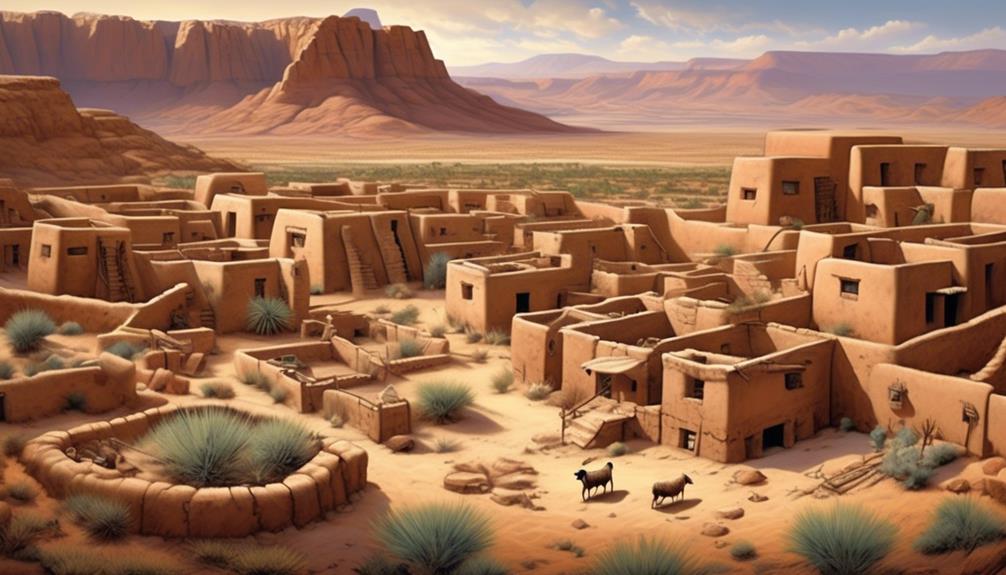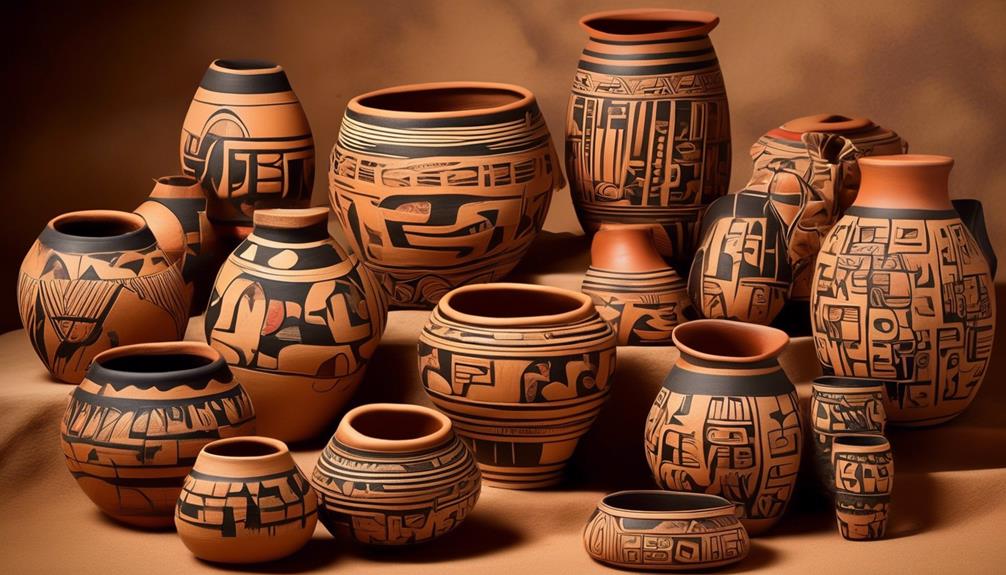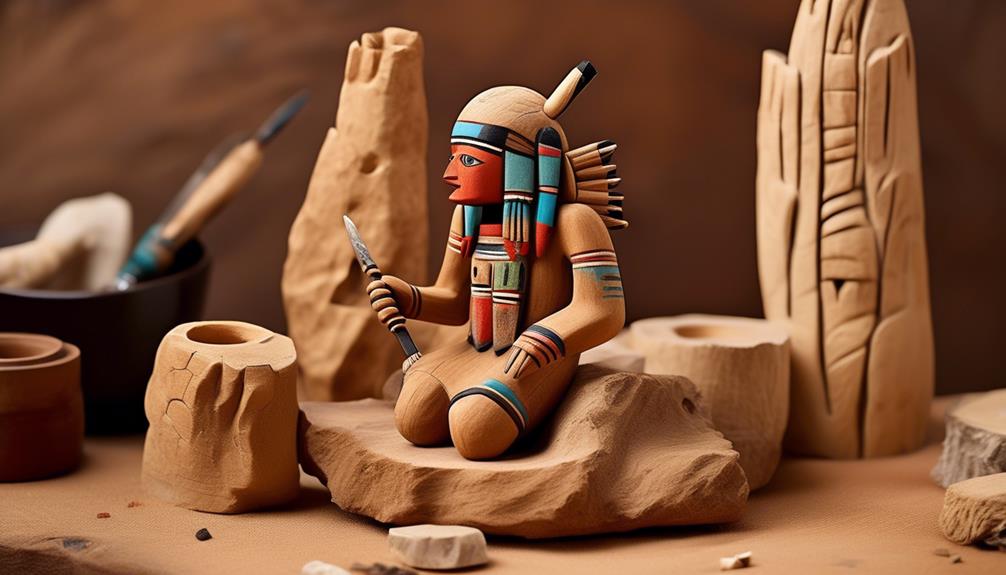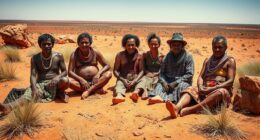Let’s delve into the climate of the Hopi Tribe. When imagining this historic community thriving in the American Southwest, we often envision a harsh and unforgiving environment. However, the reality of the Hopi climate is much more complex and multifaceted than expected.
From the unique geographical location to the impact on traditional agricultural practices, the climate of the Hopi Tribe has played a vital role in shaping their way of life. But what exactly does this climate entail, and how has it influenced the tribe's sustainability over the centuries?
Key Takeaways
- The Hopi Tribe is located in northeastern Arizona and has a diverse terrain of mesas, canyons, and arid valleys.
- The annual temperature ranges from 30°F in winter to 80°F in summer, and the average annual precipitation is around 10 inches.
- Seasonal climate variations, such as scorching summers and cooler fall and early winter, shape agricultural practices and ceremonial calendar.
- The Hopi Tribe has adapted agricultural techniques to the arid climate, integrated climate cycles into ceremonies, and implemented sophisticated methods of water conservation and soil preservation.
Geographic Location and Terrain
Located in the northeastern region of Arizona, the Hopi Tribe's land encompasses a diverse terrain of mesas, canyons, and arid valleys. The tribe's geographic location places them within the high desert landscape, characterized by vast open spaces, dramatic rock formations, and sparse vegetation. The elevation of the Hopi reservation ranges from 5,000 to 7,000 feet, contributing to its unique climate and ecosystem.
The desert landscape surrounding the Hopi Tribe is a place of rugged beauty, with its red sandstone cliffs and expansive vistas. The land is rich with natural resources, providing the Hopi people with a deep connection to the earth and its offerings. However, the arid environment also presents challenges, as water sources can be scarce, and the climate can be harsh.
Understanding the geographic location and terrain of the Hopi Tribe is essential for appreciating the ways in which the tribe has adapted to and thrived in this environment. It's a landscape that demands resilience and resourcefulness, qualities that the Hopi people have embodied for generations.
Annual Temperature and Precipitation
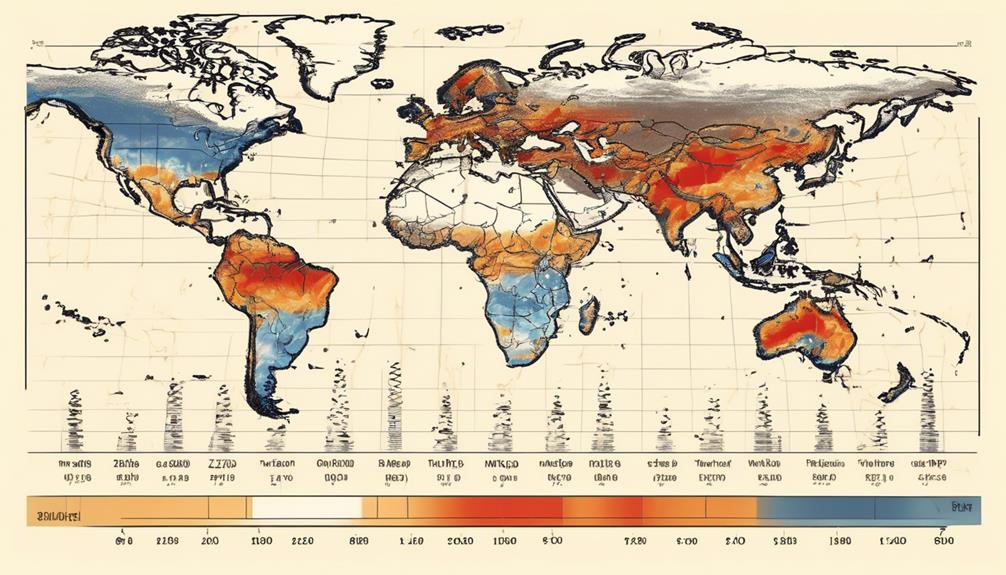
Nestled within the high desert landscape of northeastern Arizona, the Hopi Tribe experiences distinctive annual temperature fluctuations and varying levels of precipitation that profoundly shape their way of life. The average temperature in the region ranges from 30°F in the winter to 80°F in the summer, creating a stark contrast between the seasons. This temperature variation influences agricultural practices, ceremonial activities, and daily routines within the tribe. Moreover, the rainfall patterns play a crucial role in sustaining the agricultural traditions of the Hopi people. The annual precipitation averages around 10 inches, with the majority of rain falling during the summer monsoon season. This seasonal rainfall is essential for the cultivation of traditional crops such as corn, beans, and squash, which are vital to the tribe's cultural and nutritional sustenance. The table below provides a snapshot of the average temperature and rainfall patterns experienced by the Hopi Tribe throughout the year.
| Month | Average Temperature (°F) | Rainfall (inches) |
|---|---|---|
| January | 30 | 0.5 |
| April | 60 | 0.4 |
| July | 80 | 2.5 |
| October | 65 | 1.2 |
Seasonal Climate Variations
Seasonal climate variations significantly impact the daily activities and traditional practices of the Hopi Tribe, reflecting the intimate connection between the environment and their way of life.
The seasonal temperature changes play a crucial role in shaping the agricultural and ceremonial calendar of the Hopi people. During the scorching summer months, when the temperature soars, the Hopi engage in farming practices, utilizing their deep-rooted agricultural knowledge to cultivate crops that can withstand the heat.
In contrast, the cooler temperatures of fall and early winter mark the time for harvesting and various ceremonial activities.
Rainfall patterns also hold immense significance for the Hopi Tribe. The summer monsoons bring vital moisture to nourish the crops, fostering a sense of hope and abundance.
Conversely, the winter months, characterized by lower rainfall, demand careful water conservation and resource management.
Understanding these seasonal climate variations is essential for supporting the Hopi community in adapting their practices to the changing environment, ensuring the preservation of their cultural heritage for future generations.
Impact on Agriculture and Traditional Practices
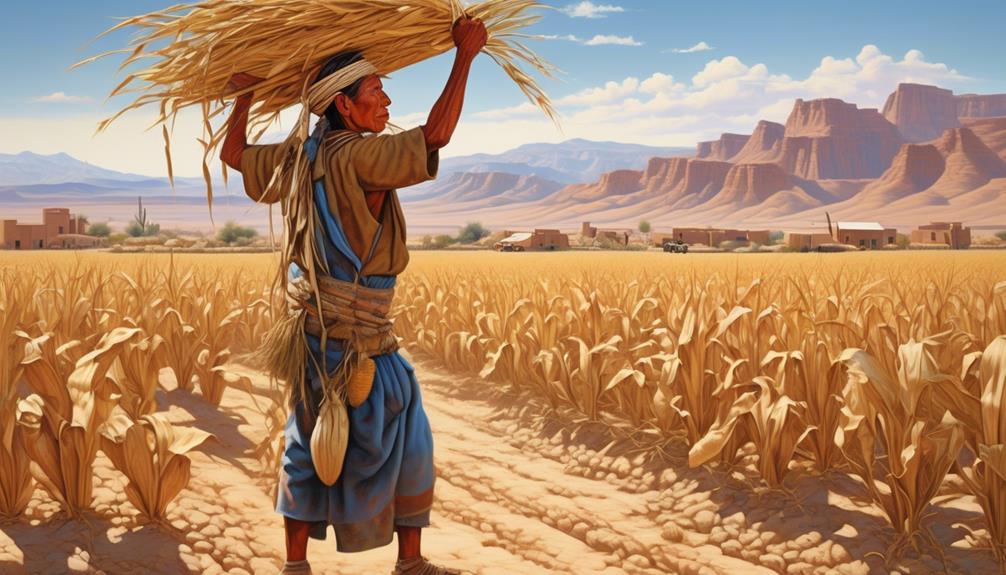
The impact of seasonal climate variations on agriculture and traditional practices is profound, shaping the daily rhythms and customs of the Hopi Tribe. Our agricultural techniques have been honed over centuries to adapt to the challenges presented by the arid climate, with practices such as dry farming and terraced fields allowing us to cultivate our crops sustainably. Cultural preservation is a cornerstone of our community, and our traditional practices are deeply intertwined with the land and its climate.
- Adapting Agricultural Techniques: We've developed sophisticated methods of water conservation and soil preservation, such as using mulch and planting windbreaks, to mitigate the impact of irregular rainfall and strong winds.
- Resilience in Crop Selection: Our traditional knowledge has enabled us to select and cultivate crops that are well-suited to the arid conditions, ensuring a consistent yield despite the challenges posed by the climate.
- Integration of Climate Cycles: Our ceremonies and rituals are closely tied to the natural cycles of the climate, serving as a reminder of the interconnectedness between our agricultural practices and the environment.
- Passing Down Traditional Knowledge: It's crucial for us to continue passing down our agricultural and traditional knowledge to future generations, ensuring the preservation of our cultural heritage and sustainable practices.
Climate Change and Future Challenges
Amidst the enduring traditions and agricultural practices of the Hopi Tribe, we are confronting the escalating impacts of climate change and the formidable challenges it presents for our community's future. As we strive to preserve our cultural heritage, we are also focusing on future adaptation and environmental sustainability. The changing climate has brought about unpredictable weather patterns, affecting our traditional farming methods and the availability of vital natural resources. It's imperative for us to address these challenges by implementing sustainable practices and fostering resilience within our community.
—
| Future Adaptation | Environmental Sustainability |
|---|---|
| Implementing resilient agricultural techniques | Conserving water resources |
| Diversifying food sources | Promoting renewable energy |
| Strengthening community resilience | Protecting natural habitats |
| Integrating traditional knowledge with modern solutions | Reducing carbon footprint |
—
Frequently Asked Questions
How Does the Hopi Tribe's Climate Impact Their Traditional Ceremonies and Rituals?
The Hopi Tribe's climate profoundly shapes our traditional ceremonies and rituals. The climate's influence on our agricultural cycles directly impacts the timing and nature of our ceremonies, reinforcing the deep connection between our culture and the land.
The changing seasons and natural elements play a pivotal role in our traditional practices, reflecting our reverence for the Earth and its cultural significance. We honor and adapt to the rhythms of our environment, ensuring the continuity of our sacred traditions.
Are There Any Specific Weather Patterns or Natural Phenomena That Hold Significance in Hopi Culture?
Significance in Hopi culture lies in the dance rituals performed during the summer monsoon season. The rain is vital for agriculture and sustains the community.
Natural phenomena like lightning are believed to be messages from ancestral spirits, guiding the tribe. Our cultural traditions are deeply intertwined with climate adaptation, emphasizing the interconnectedness of nature and our way of life.
How Does the Climate Affect the Availability of Natural Resources for the Hopi Tribe?
The impact of drought on the Hopi Tribe affects our agriculture practices and the availability of natural resources. Our community heavily relies on farming for sustenance, and prolonged dry spells can lead to crop failures, impacting our food security.
Additionally, drought affects the availability of water, crucial for our daily needs and ceremonial practices. Our resourcefulness and traditional knowledge guide us in adapting to these challenges, but the changing climate poses ongoing concerns for our tribe.
What Measures Has the Hopi Tribe Taken to Adapt to Changes in Their Climate Over Time?
Adaptation strategies are crucial for our tribe's resilience. We've implemented innovative agriculture techniques, like dry farming and planting drought-resistant crops, to combat the impact of climate change.
Preserving traditional knowledge and embracing modern methods has helped us thrive in challenging conditions. Our community also emphasizes water conservation and sustainable land management, ensuring that our cultural practices remain in harmony with the environment.
Are There Any Traditional Stories or Beliefs Within the Hopi Tribe That Are Related to the Climate and Weather Patterns?
Traditional stories and beliefs within the Hopi Tribe are deeply intertwined with weather patterns and climate impact. These narratives often reflect our understanding of the natural world and influence our ceremonial practices.
Weather beliefs are integral to our cultural identity and shape our interactions with the environment. These stories are passed down through generations, providing valuable insight into the significance of climate and weather within our community.
Conclusion
In conclusion, the climate of the Hopi tribe is characterized by its arid and semi-arid conditions, with seasonal variations in temperature and precipitation.
While some may argue that the harsh climate poses challenges for agriculture and traditional practices, the Hopi people have adapted and thrived in this environment for centuries, demonstrating resilience and innovation in the face of adversity.
The climate may present challenges, but it also shapes the unique cultural and agricultural traditions of the Hopi tribe.
